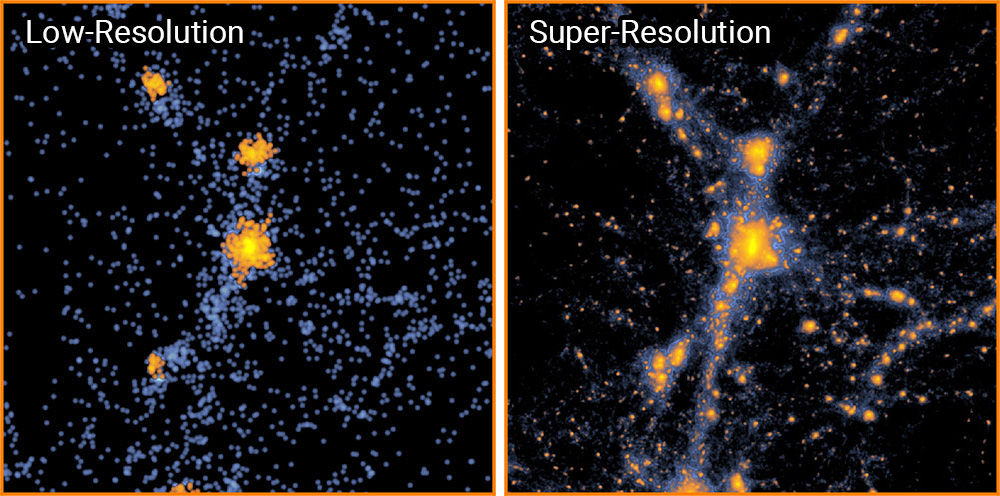
A technology that simulates space structures in a short time by analyzing astronomical observation data using AI has been announced. Accordingly, it is expected that space research, which had to be carried out for an enormous amount of time, will accelerate.
Simulating the structure of the universe from observations collected by the astronomical telescope is essential for research to deepen understanding of the universe and to unravel the dark matter identity, one of the universe’s greatest mysteries. However, this requires enormous computational costs, so so far the scope or accuracy of the simulation, or both, has been sacrificed.
The research team at Carnegie Mellon University developed an AI that accurately generates high-resolution image data from low-resolution images by learning a machine learning algorithm based on the hostile generation network GAN on high-resolution image data. The AI developed in this way is said to have been created from a low-resolution image to an ultra-high-resolution image containing 512x particles.
The time required for analysis has also been greatly reduced. For example, a model with 134 million particles in a space of 500 million light-years took 560 hours in the existing simulation, but AI finished it in 36 minutes. In addition, in order to increase the number of particles to 134 billion, which is 1,000 times, it took several months to use a dedicated supercomputer in the existing simulation, but AI can finish it in just 16 hours.

The research team said that if the time required for space simulation can be shortened, it could lead to great advances in physics and astronomy. Simulating space can mimic the history of the universe from the past to the future, such as the formation of galaxies and black holes. Is said to be.
The AI developed in this way was developed using a technology that predicts the effect of gravity on dark matter, so it is good at simulating large-scale space structures, but it is said to ignore relatively small phenomena in the entire universe such as star formation, supernova, and black hole. In the future, the research team plans to improve AI accuracy by performing simulations using the existing method and AI in parallel. Related information can be found here.


















Add comment